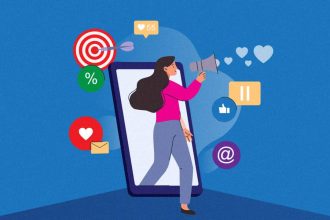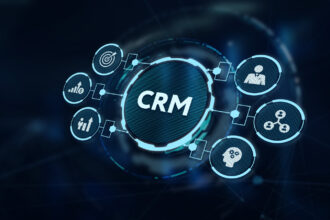The purpose of digital accessibility is to guarantee that everyone has access to a wide range of online information and services, regardless of physical abilities or limitations. It is vital to recognize that only some use digital goods and services in the same manner. Some individuals never use them at all. A blind person, for example, might use a screen reader, but a person with a learning impairment may prefer that the information be presented more intelligibly.
The question is what actions you may take to guarantee that your digital content and services are accessible. Please get in touch with QualityLogic if you wish to use additional sources to ensure that your material is entirely available. They are a software company that aims to give all companies access to people from all walks of life.
When you enlist their assistance, they will analyze your software for gaps and assist you in closing them so that you may be certified digitally accessible. Before contacting them, use the following to determine your current status.
Be Certain That Your Material is Easy to Grasp
Make sure that your writing is simple. It may look monotonous, but it is important to reiterate. This includes communicating in clear English and avoiding jargon. It also entails making your material available in a number of formats, such as audio and video, for individuals who prefer or are compelled to consume it in that manner to suit a certain need.
Utilize Images and Videos
Incorporating photos and videos into your material may boost its visual appeal and readability. To avoid accessibility concerns, they must be utilized with considerable caution. Include text equivalents for visual components like photographs and videos so that folks who can’t see them may still grasp the material. Ensure your still images and videos have adequate contrast for people with low vision.
Make Accessibility a Priority
The most effective method for guaranteeing the accessibility of digital products and services is to design them with persons with disabilities in mind. This demands considering access at all stages of the design process, from user research through product coding. It is also necessary to collaborate with accessibility specialists to ensure that your designs are as user-friendly as feasible.
Conduct Accessibility Tests
Even if your goods and services were created with accessibility in mind from the beginning, usability testing should be performed to ensure their usefulness. This requires employing a wide range of testing approaches and procedures, including automated accessibility testing tools and manual testing by persons with disabilities.
Complying with Current Accessibility Laws and Standards
Several laws and regulations, most notably Web Content Accessibility Guidelines version 2.0, require accessibility (WCAG). In order to standardize their operations, a rising number of countries are creating these norms and legislation. Stay up to date on the latest updates to guarantee that your products and services are legal.
These suggestions may be helpful to you as you produce content that anybody can use and engage in!
The Benefits of Digital Access
The World Health Organization defines disability as “an umbrella word that includes impairments, activity limits, and participation restrictions.” Physical, sensory, cognitive, intellectual, and behavioral health issues can all lead to disabilities. One billion individuals are estimated to have a disability, which is one of the world’s most frequent medical conditions. Access to services such as jobs and education, however, may be challenging for persons with impairments.
One strategy for tackling these difficulties is to make digital information and services available to everyone. It is vital to design websites and software that are accessible to a wide range of disabled people, including those who are blind or have limited vision, deaf or have hearing loss, and have cognitive or cerebral problems, in order to do this. By reducing some of the barriers that individuals with disabilities confront and boosting the accessibility of digital material and services, we can help them live entire, inclusive lives.
The Use of Digital Content by Disabled People
People with varied impairments confront a variety of problems when it comes to accessing digital material. Text-to-speech conversion software may be required for people with low or no eyesight. Accessing audio and video material may require subtitles or transcripts for hard-of-hearing and deaf individuals. Those with cognitive disabilities may require an explanation of the scope.
Content that can be accessed via numerous input modalities, such as switches or eye-gaze sensors, may be required for those with physical limitations. Website designers and developers may build digital material that is more accessible to a larger audience by keeping these varied features in mind.
Keep the Blind in Mind When Designing
It is vital to recognize that not all encounters with the environment are created equal when it comes to digital information. For example, those who are blind or have reduced eyesight must rely on a variety of signals to get information. Certain precautions must be taken before delivering digital content to children. For example, every image must have a written alternative caption. Videos must also have closed captioning and audio explanations. Using these strategies, you may ensure that everyone has access to your digital information.
Considering Hearing People When Designing
It is vital to consider the needs of all possible viewers while generating digital content. Individuals with impairments who may struggle with the standard curriculum are included. Closed captioning allows deaf and hard-of-hearing persons to see digital information.
When generating digital multimedia with closed captioning, several things must be addressed. The captions must, first and foremost, be readable and intelligible. This includes utilizing large letter sizes and avoiding fonts with complex patterns that may be difficult to read. Captions and audio should also be in sync. The audio recording can be transcribed manually or automatically using automated captioning software. Finally, make certain that the captions are error-free.
You will be able to develop digital material that is accessible to individuals of all abilities if you follow these rules. Use closed captions to make your work more accessible; additional alternatives include audio description and sign language interpretation. Considering their demands, it is feasible to develop digital material that appeals to a wide spectrum of viewers.
Making Resources Available to People With Cognitive Disabilities
Several issues must be addressed when generating digital material for persons with cognitive disabilities. Understanding that each person is unique and needs a one-of-a-kind approach is vital. A variety of broad criteria may be applied to make the material more accessible. For example, disability services promote the use of simple language and images. This improves the reader’s understanding of the content by removing any ambiguity.
There should also be numerous opportunities for debate and criticism. This boosts the reader’s chances of understanding and remembering the content by allowing them to relate to it in their own context. These recommendations will assist designers in producing relevant and easily accessible digital material for all clients.
Contact QualityLogic Now
QualityLogic can assist you with expanding the possibilities of your website, regardless of its existing state. They must appear and set up equipment for your company. They will educate you on digital accessibility concepts while assisting you with the content production process. You will not be in the dark. They’ll train you to the same level as their own team. Visit www.qualitylogic.com to see how they can assist you in creating the greatest digital content possible while maintaining accessibility at the center of your design.





